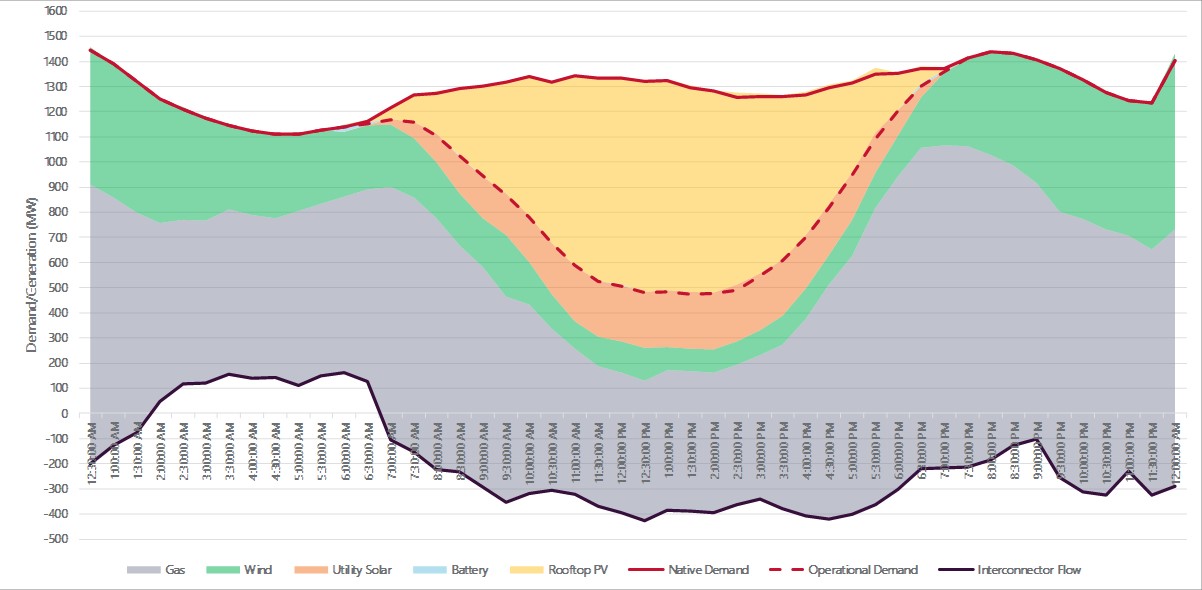On Sunday 12:30 PM AEST, favourable conditions for renewable energy resources, coupled with low weekend demand, meant that South Australia set a new record for lowest operational demand at 475 megawatts. This is the second week in a row that a new record for South Australia’s minimum operational demand has been set, and a strong sign of just how quickly Australia’s energy industry is transforming.
If you didn’t know already, operational demand is the amount of power consumers require from Australia’s energy markets. This does not include power generated by behind-the-meter resources, like rooftop PV, which has already proven itself as a key driver behind these new records.
“At the time of the new record, rooftop solar was generating approximately 821 megawatts of power, which equalled 64% of the total demand required in South Australia. If you add in power generated by utility solar and wind generation, approximately 90% of the state’s native demand was met by renewable sources,” said AEMO’s Chief Operations Officer, Damien Sanford.The graph below highlighting the role rooftop solar played in this new operational minimum demand record:
“Rooftop solar usually has its maximum output during the middle of the day, when many of us are not at home and consuming less energy,” said Damien.
“Overall electricity consumption is also at its lowest during mild weather conditions, when we aren’t using our heating or cooling systems. Those same mild, clear and sunny conditions are also ideal for rooftop solar,” said Damien.
While these new records can be exciting, that does not mean they’re without their challenges. The increasing contribution of behind-the-meter resources to our energy system has meant that managing key system requirements, like frequency and voltage, can become more difficult.
“System security is AEMO’s highest priority. That’s why we’re working closely with industry members on several market and technical trials for distributed energy resources, like virtual power plants (VPPs), to understand how we can better utilise the increasing amounts of behind-the-meter resources we have today,” said Damien.
As our industry continues to rapidly transform, we’re expecting more exciting records and developments to occur, so be sure to watch this space!
For all the latest news, insights and analysis from the Australian energy industry subscribe to our fortnightly newsletter and download the new Energy Live app on Apple and Android.








